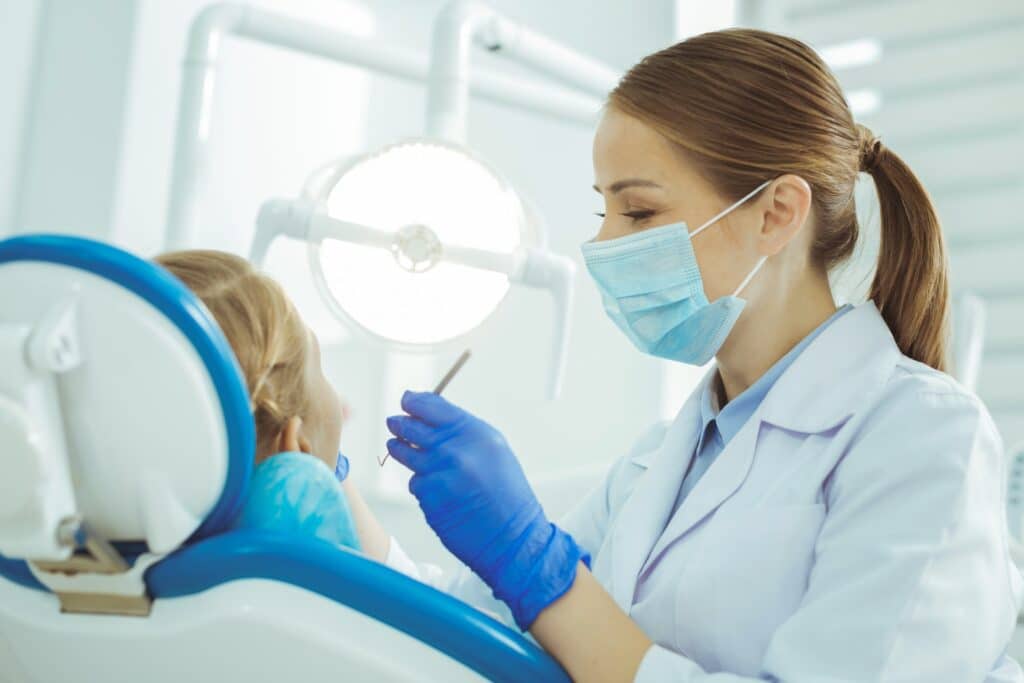Sedation dentistry has become an integral part of modern dental services, addressing the needs of patients who struggle with dental anxiety. Countless individuals avoid seeking dental care due to fear or anxiety related to dental procedures. However, regular dental check-ups and treatments are essential for maintaining oral health. At Pickering Dental Services, we understand the importance of providing a comfortable and stress-free dental experience for our patients. In this blog post, we will explore the concept of sedation dentistry, how it helps overcome dental anxiety, and pave the way for healthy and comfortable dental visits.
Sedation dentistry involves the use of medication to help patients relax during dental procedures. It can range from minimal sedation, where patients are awake but feel more at ease, to general anesthesia during which patients are completely unconscious. With the advancements in dental technologies and techniques, sedation dentistry has become an indispensable service for patients seeking gentle family dental care.
At Pickering Dental Services, our goal is to provide safe and effective sedation dentistry options. Our specially trained professionals thoroughly assess each patient’s needs to determine the appropriate sedation method, ensuring a tailored and comfortable experience. Some of the commonly employed methods include nitrous oxide (laughing gas), oral sedatives, and IV sedation. By easing a patient’s dental anxiety and minimizing discomfort, sedation dentistry enables timely dental treatments, reducing the risk of long-term oral health problems.
In addition to sedation dentistry, Pickering Dental Services offers a comprehensive range of dental services that cater to various patient needs, such as aesthetics and teeth whitening, crowns and bridges, tooth-coloured dental fillings, implant dentistry, veneers, periodontal care, and dental extraction services. Our expertise in these areas, coupled with our focus on patient comfort, ensures that our patients receive the highest standard of dental care.
In the following sections of this article, we will delve deeper into the different types of sedation dentistry, their applications, and how they contribute to a positive dental experience. Furthermore, we will discuss some effective strategies for managing dental anxiety, empowering our readers with the knowledge necessary to maintain their oral health without the fear or discomfort holding them back.
Sedation Dentistry: Demystifying Dental Anxiety and Enabling Comfortable Dental Visits
Understanding Dental Anxiety
Dental anxiety is a common issue experienced by numerous individuals. This apprehension often stems from past negative dental experiences, fear of needles or pain, embarrassment regarding one’s oral health, or other unrelated anxieties manifesting in the dental setting. Unfortunately, avoiding dental care due to anxiety can lead to the worsening of oral health issues, eventually requiring more intensive treatments. To break this cycle, understanding and addressing dental anxiety are critical to promoting positive dental experiences and overall oral health.
Types of Sedation Dentistry and Their Applications
To provide a tailored and comfortable dental care experience, various sedation methods are available, ranging from mild to more profound sedation depending on the patient’s needs. Below are some of the most common techniques utilized at Pickering Dental Services:
1. Nitrous Oxide
Also known as laughing gas, nitrous oxide is a mild and easily adjustable sedation method. A mixture of nitrous oxide and oxygen is administered through a mask placed over the patient’s nose, inducing a relaxed state. This method allows patients to remain awake and able to communicate with the dental team while feeling more at ease during the procedure. Once the mask is removed, the sedation effects wear off quickly, allowing patients to drive themselves home.
2. Oral Sedation
Oral sedation involves the use of prescription medication taken by the patient before their dental appointment. This method induces a more profound state of relaxation than nitrous oxide, though patients remain awake and generally able to respond to questions. With oral sedation, patients may experience drowsiness, and arrangements for transportation to and from the appointment are recommended.
3. Intravenous (IV) Sedation
For patients with more severe anxiety or those undergoing more extensive dental procedures, IV sedation may be the most suitable option. This method involves administering sedative medication directly into the bloodstream, providing a deep state of relaxation. Although patients remain conscious, they may not remember much from the procedure. It is essential for patients to have someone drive them home after receiving IV sedation due to the lingering drowsiness.
4. General Anesthesia
In rare cases, general anesthesia may be recommended for patients with extreme dental anxiety or those undergoing multiple or complex dental procedures. This method involves inducing a state of unconsciousness, allowing patients to undergo dental treatments without any awareness of the procedure. When under general anesthesia, patients require close monitoring and typically need time to recover before returning home.
Tackling Dental Anxiety before Sedation
While sedation dentistry offers excellent solutions for managing dental anxiety, employing some strategies before sedation can also help address apprehensions. Here are a few tips for minimizing dental anxiety:
1. Communicate Openly
Establishing open communication with your dental team, sharing your concerns, and asking questions can go a long way in easing anxiety. Dentists are trained to recognize and address dental anxieties, so don’t hesitate to express your thoughts and fears.
2. Practice Relaxation Techniques
Deep breathing exercises, progressive muscle relaxation, or mindfulness meditation can help reduce stress and anxiety before your dental appointment. Implementing these techniques while waiting for your appointment can alleviate apprehension and induce a calmer mental state.
3. Bring a Distraction
Listening to music, audiobooks, or podcasts can help take your mind off dental procedures and create a more enjoyable atmosphere. Be sure to bring comfortable earbuds or headphones and inform your dental team of your plans.
Conclusion
At Pickering Dental Services, we are committed to providing comprehensive dental care that attends to our patients’ unique needs, including their comfort and peace of mind. As we demystify dental anxiety, our team focuses on patient-centred approaches that mitigate apprehensions and ensure a more positive dental experience. Sedation dentistry, in combination with understanding and addressing dental anxiety, plays a pivotal role in empowering our patients to pursue and maintain the oral health they deserve.
If you’re ready to experience gentle family dental care, free from anxiety, contact Pickering Dental Services today to schedule an appointment and learn more about our personalized approach to sedation dentistry.



